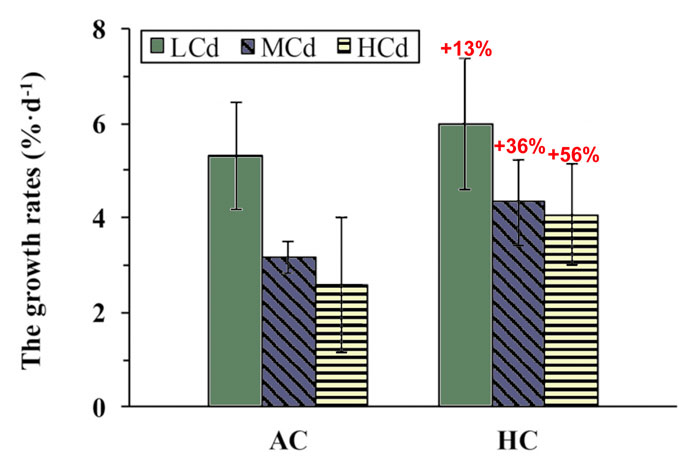| Tweet | Follow @co2science |
Paper Reviewed
Ma, H., Zou, D., Wen, J., Ji, Z., Gong, J. and Liu, C. 2018. The impact of elevated atmospheric CO2 on cadmium toxicity in Pyropia haitanensis (Rhodophyta). Environmental Science and Pollution Research 25: 33361-33369.
The growth and development of urban areas near coastal waters has introduced heavy metal pollution to the marine environment. Among such potentially debilitating pollutants is cadmium, which if present in sufficient concentrations, can severely impact marine life.
In recent years there has been growing concern that an organism's ability to withstand or endure heavy metal pollution might be compromised by so-called ocean acidification. And that concern has led a growing number of researchers to explore the combined impacts of ocean acidification and heavy metal pollution on marine life.
Focusing on a key seaweed species that brings in hundreds of millions of dollars in revenue annually, Ma et al. (2018) cultured Pyropia haitanensis under ambient or elevated CO2 concentrations and three levels of cadmium (Cd2+; control, 4 or 12 mg L-1) to examine growth and physiological responses of this economically-important macroalgae. As a traditional food of southern China, P. haitanensis is rich in vitamins and minerals, low in fat, and high in antioxidants, making it a good candidate for investigation.
Not surprisingly, the presence of Cd2+ negatively impacted the growth of P. haitanensis, whereas elevated CO2 had an opposite effect. As shown in Figure 1, elevated CO2 stimulated P. haitanensis growth by 13%, 36% and 56% in the control, 4 and 12 mg L-1 Cd2+ treatments, respectively. What is more, Ma et al. also report that elevated CO2 reduced oxidative stress and enhanced the antioxidant ability of this macroalgal species. Consequently, the six researchers determined that high CO2 "reduced the toxicity of Cd2+ on the alga," while adding that "the predicted high CO2 level in the future might be in favor of P. haitanensis aquaculture when faced with the aggravation of marine cadmium pollution." And that is wonderful news for those who grow and consume this important seaweed.

Figure 1. Relative growth rate of Pyropia haitanensis cultured at different levels of cadmium exposure and CO2 conditions. Cadmium concentration: LCd, control; MCd, 4 mg L-1; HCd, 12 mg L-1. Carbon dioxide concentration: AC, 410 ppm; HC, 1100 ppm. The error bars indicate the standard deviations. Source: Ma et al. (2018).




